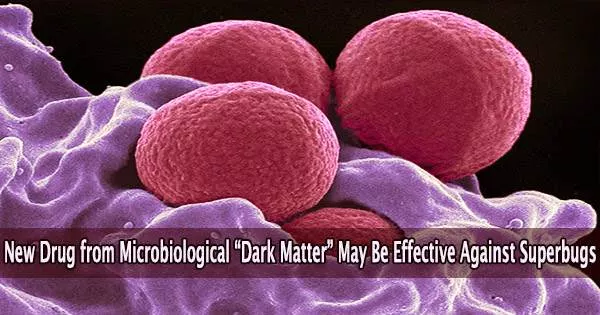An innovative, potent antibiotic that was discovered from previously unstudied bacteria appears to be able to fight off dangerous microorganisms and even ‘superbugs’ that have developed multiple resistances. The antibiotic Clovibactin seems to kill bacteria in an unexpected method, which makes it more challenging for bacteria to acquire any resistance to it.
Researchers from Utrecht University, Bonn University (Germany), the German Center for Infection Research (DZIF), Northeastern University of Boston (USA), and the company NovoBiotic Pharmaceuticals (Cambridge, USA) now share the discovery of Clovibactin and its killing mechanism in the scientific journal Cell.
Urgent need for new antibiotics
Antibiotic resistance poses a serious threat to human health, and scientists are working throughout the world to find new treatments. “We urgently need new antibiotics to combat bacteria that become increasingly resistant to most clinically used antibiotics,” says Dr. Markus Weingarth, a researcher from the Chemistry Department of Utrecht University.
Finding novel antibiotics is difficult, though, as there haven’t been many over the past few decades, and when they have, they frequently mimic more established, older medicines.
“Clovibactin is different,” says Weingarth. “Since Clovibactin was isolated from bacteria that could not be grown before, pathogenic bacteria have not seen such an antibiotic before and had no time to develop resistance.”
Antibiotic from bacterial dark matter
NovoBiotic Pharmaceuticals, a small US-based early-stage company, and microbiologist Prof. Kim Lewis from Northeastern University, Boston, discovered Clovibactin. Earlier, they developed a device that allows to grow ‘bacterial dark matter’, which are so-called unculturable bacteria.
It’s interesting to note that 99% of all bacteria are “unculturable,” meaning they have never been successfully cultivated in a lab and hence haven’t been mined for new antibiotics. Using the device, called iCHip, the US researchers discovered Clovibactin in a bacterium isolated from a sandy soil from North Carolina: E. terrae ssp. Carolina.
NovoBiotic Pharmaceuticals demonstrates how Clovibactin effectively combats a variety of bacterial infections in the joint Cell paper. Staphylococcus aureus superbug-infected mice were successfully treated with it as well.
Clovibactin wraps around the pyrophosphate like a tightly sitting glove. Like a cage that encloses its target. As Clovibactin only binds to the immutable, conserved part of its targets, bacteria will have a much harder time developing any resistance against it. In fact, we did not observe any resistance to Clovibactin in our studies.
Dr. Markus Weingarth
A broad target spectrum
Clovibactin appears to have an unusual killing mechanism. It specifically targets three precursor molecules, not just one, that are all necessary for building the bacterial cell wall, which resembles an envelope. This was discovered by the group of Prof. Tanja Schneider from the University of Bonn in Germany, one of the Cell paper’s co-authors.
Schneider: “The multi-target attack mechanism of Clovibactin blocks bacterial cell wall synthesis simultaneously at different positions. This improves the drug’s activity and substantially increases its robustness to resistance development.”
A cage-like structure
How exactly Clovibactin blocks the team of Dr. Markus Weingarth from Utrecht University unraveled the synthesis of the bacterial cell wall. They used a special technique called solid-state nuclear magnetic resonance (NMR) that allows to study Clovibactin’s mechanism under similar conditions as in bacteria.
“Clovibactin wraps around the pyrophosphate like a tightly sitting glove. Like a cage that encloses its target,” says Weingarth. This is was gives Clovibactin its name, which is derived from Greek word “Klouvi,” which means cage. The remarkable aspect of Clovibactin’s mechanism is that it only binds to the immutable pyrophosphate that is common to cell wall precursors, but it ignores that variable sugar-peptide part of the targets.
“As Clovibactin only binds to the immutable, conserved part of its targets, bacteria will have a much harder time developing any resistance against it. In fact, we did not observe any resistance to Clovibactin in our studies.”
Fibrils capture the targets
Clovibactin can do even more. It self-assembles into sizable fibrils on the surface of bacterial membranes after binding the target molecules. The target molecules are kept sequestered for as long as is required to kill bacteria because these fibrils are stable for an extended period of time.
“Since these fibrils only form on bacterial membranes and not on human membranes, they are presumably also the reason why Clovibactin selectively damages bacterial cells but is not toxic to human cells,” says Weingarth. “Clovibactin hence has potential for the design of improved therapeutics that kill bacterial pathogens without resistance development.”





